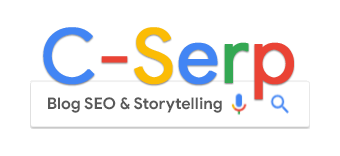The decline of ecommerce search ads: Are shopping campaigns to blame?

For years, search campaigns have been an imperative part of one’s PPC strategy.
However, the landscape is shifting and Google is increasingly prioritizing shopping within the user experience, changing how users interact with the SERPs and how we as advertisers approach strategy for ecommerce clients.
With continued investment in AI-powered tools like Performance Max, which has absorbed much of what traditional search once offered, recent betas such as AI Max, and now Google testing a massive new carousel format for Shopping ads, the platform is clearly moving toward a Shopping-first ecosystem.
As these changes roll out, traditional search ads are getting less visibility, less control, and arguably, less relevance – especially for ecommerce brands.
Google Ads in ecommerce: Then and now
Shopping on Google all started with the launch of Froogle back in 2002.
It was changed to Google Product Search in 2007, then moved to a paid-only experience in 2012 with the launch of product listing ads, or PLAs (now Shopping ads).
Then, in a total 180, Google brought back free product listings and an organic shopping experience in 2020, which was a game changer.
Since then, Google has been diligently working on the shopping experience and strengthening its search offering to become a one-stop shop for the widest array of products from all vendors.
Search ads vs. Shopping ads
Traditional search campaigns were the foundation of a solid ecommerce digital advertising strategy.
Advertisers could bid on high-intent terms like “best-running shoes” or “warm winter jackets” and, before PLAs, search ads were there to capture buyers and send them right to their product pages.
Marketers had granular control over bids, full visibility into the search terms, and the ability to fine-tune keyword lists, giving them a clear picture of performance and a direct line to optimizing their return on ad spend.
Then with PLAs, product feeds were used to display product ads, showcasing a product image, price, brand name, and some additional attribute information, with no keywords required.
Eventually, Google introduced more automation with Smart Shopping campaigns, which allowed advertisers to:
- Promote products across multiple networks, including Search, Display, YouTube, and Gmail.
- Simplify campaign management by combining these channels under one campaign type.
Since then, Smart Shopping has evolved into the more advanced, AI-driven Performance Max campaign.
And it hasn’t stopped there.
In the last six months, Google has rolled out numerous changes promoting a shopping-first experience in the SERPs and additional AI enhancements, including:
- A complete overhaul of Google Shopping.
- Shopping comparisons in AI overviews.
- Vision Match.
- And more.
Google is continuing to invest more resources in Shopping than ever before, and it doesn’t look like it will be taking its foot off the gas anytime soon.
How Google is prioritizing Shopping over search campaigns
Google’s SERPs look a lot different today than they did five years ago, or even a year ago.
For example, when I search for “Men’s Bike Helmet” on Google in the U.S., the results look much more like a true shopping experience than a traditional SERP:
At first glance, this looks like a shopping SERP, but it’s straight from Google.com!
Everything above the fold is product-based, not text/traditional results-based, and it includes filters on both the left-hand rail and at the top.
Five years ago or even a year ago, the majority of these results would have been Search Ads and organic listings.
We can expect even more changes coming to the SERPs given Google’s announcement last week about a new Shopping Ads carousel format, allowing users to see multiple rows of PLAs.
I spotted it myself in the wild when searching “soccer balls.”
This would be a game-changer for PLAs.
It would keep buyers browsing through the Shopping Ads results longer, possibly keeping them from ever scrolling down far enough to see a Search Ad.
In this case, there wasn’t a Search Ad in sight.
As a marketer, I see it in my own accounts.
Below is a screenshot of one of my client’s non-brand Search and Shopping campaigns’ average conversion value/cost so far this year:
In addition to Google refining the Google Shopping experience, we’ve seen several new AI campaign features introduced, such as the new beta AI Max.
Google is also testing the waters with intent-based matching rather than keyword matching for Search campaigns.
This is something we are somewhat familiar with if you’re using Performance Max, but testing this feature exclusively on Search campaigns is new.
So, is there a future for keywordless match search campaigns?
Why we still need traditional search
Despite the rise of Shopping in the SERPs, Search campaigns can still play a key role in our account strategy while also covering areas Shopping can’t:
- Long-tail or complex queries (e.g., “organic dog food for large breeds with allergies”).
- Brand protection, ensuring competitors don’t steal your traffic.
- A/B testing different ad copy, landing pages, and assets.
I’m not saying we shouldn’t run traditional Search Ads within our Google Ads accounts.
Rather, we should continue to leverage a full mix of campaign types to prevent gaps in coverage while mitigating overlap.
With the addition of Performance Max touching multiple networks, a thought-out approach to account structures is needed, with campaigns complementing each other rather than working in conjunction.
What does this mean for ecommerce marketers?
Search isn’t dead, but it’s lower down the ladder on driving ecommerce strategy in Google Ads accounts.
As Google’s SERPs shift favorably toward feed-based and visually appealing Shopping results, traditional Search campaigns still hold value, but it is shrinking.
Ecommerce brands need to be thinking about adapting and diversifying their strategies fast, or they risk falling behind.
Shopping ads are here to stay, even with new technologies emerging.

